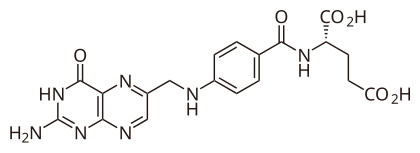Diseases and health conditions are classified to create an understandable system to monitor, control, prevent and treat them – the biggest distinction between illnesses from a public health standpoint is their status as a communicable or non-communicable disease. For the purpose of this article, we will not focus on communicable diseases, which are caused by a specific pathogen and transmissible between infected to uninfected hosts – physical, social, and economic factors play a strong role in the epidemiology of these diseases. Non-communicable diseases (NCD), also known as chronic diseases, are mainly a byproduct of societal conditions and lifestyle habits such as poor nutrition, excess alcohol intake, a sedentary lifestyle, and smoking. Health Trumps Wealth was drafted up to focus on non-communicable diseases and their prevention. Given that most of the readers live in nations with a reduced prevalence of infectious diseases (except for the recent COVID-19 pandemic), it’s only logical to focus on what could have more impact.
The World Health Organization estimated that in 2010, around 150 million people were affected with some flavor of NCD, with a greater concentration in low to middle income countries. 4 primary NCD categories that you are probably aware of are cardiovascular disease, cancer, chronic respiratory diseases, and diabetes, with these 4 categories accounting for over 80% of NCD deaths. NCDs are the leading cause of global death, making up ~71% of the yearly total death rate. If we note that NCDs alone killed 41 million people in 2018, these 4 categories accounted for around 32 million deaths – this truly a staggering number that could be reduced. One other noteworthy point is that the global economic cost of NCDs is expected to exceed $51 trillion USD by 2025, if health management continues as it is now. This paves way for strong economic benefit in the healthcare/medical/pharma sector, or can be seen as a strong opportunity for preventative and grassroots community health efforts to take a stand. Both paths have their own pros and cons.
Analysis and identification of particular risk factors and early detection methods yield an increased opportunity for reducing the instances of NCDs, and lower their prevalence and associated complications in modern society. A big factor in driving change, and ultimately improvements in global health, is a broader scope of public health measures – this includes prioritizing issues to sanitation, food safety, and infectious disease controls, as these categories all lay the foundation upon which a functional and healthy society grows. Once these are handled, prevention efforts can grow as a social movement, by means of individual education, and population interventions at the primary, secondary, and tertiary levels. An ounce of prevention is worth a pound £ of cure, if not significantly more (in this case, an amount surpassing tens of trillions of dollars ;).
Below, we have a cool graphic from the WHO that depicts some interventions that are economically feasible for most nations to implement. These interventions are aptly named “Best Buys”, and should have no affiliation with the known American electronic retailer. You may notice that a good portion of the listed measures are common warnings and bits of advice a well meaning companion or doctor may tell you….

With all of that being said, what can we directly do to prevent and reduce instances of NCDs as time passes? A HUGE impact can be made through educating the younger population in school (maybe in Physical Education, or Health classes?) about NCDs and associated risk factors. It may be shocking to hear that over 80% of adolescents don’t get adequate physical activity, and that 41 million children under the age of 5 are overweight or obese. These poor lifestyle choices and behaviors lead to cemented habits and sub optimal environments that ensure the progression of NCDs in future generations.
Given the widespread use of the internet and the access to information that youth now have, the opportunity for these young people to learn and utilize the available knowledge to improve their lives and prevent NCDs is up for the taking. Social media, digital journalism, and community programs are just some of the ways that the youth population can raise awareness of NCDs and promote behavioral change that would translate into healthy habits. The long term hope is that these efforts can drive change at the policy level, and have a longer lasting effect at a far greater scale.
Any comments, concerns, or questions? Drop a message in the comments box below. As always, thanks for reading.
Sources:
- http://www.acphd.org/communicable-disease.aspx
- https://en.wikipedia.org/wiki/Non-communicable_disease
- https://www.who.int/nmh/publications/ncd_report_full_en.pdf
- https://www.who.int/en/news-room/fact-sheets/detail/noncommunicable-diseases
- https://www.un.org/youthenvoy/wp-content/uploads/2015/06/YouthStatsHealthpdf2.pdf
- https://apps.who.int/iris/bitstream/handle/10665/204176/9789241510066_eng.pdf;jsessionid=DBD694F29005B1696AAD941D327CC2DC?sequence=1
- https://apps.who.int/iris/bitstream/handle/10665/204176/9789241510066_eng.pdf;jsessionid=DBD694F29005B1696AAD941D327CC2DC?sequence=1
https://www.amazon.com/Intelligent-Peephole-Security-Doorbell-KAMANQI/dp/B07DKJ25ZR






























